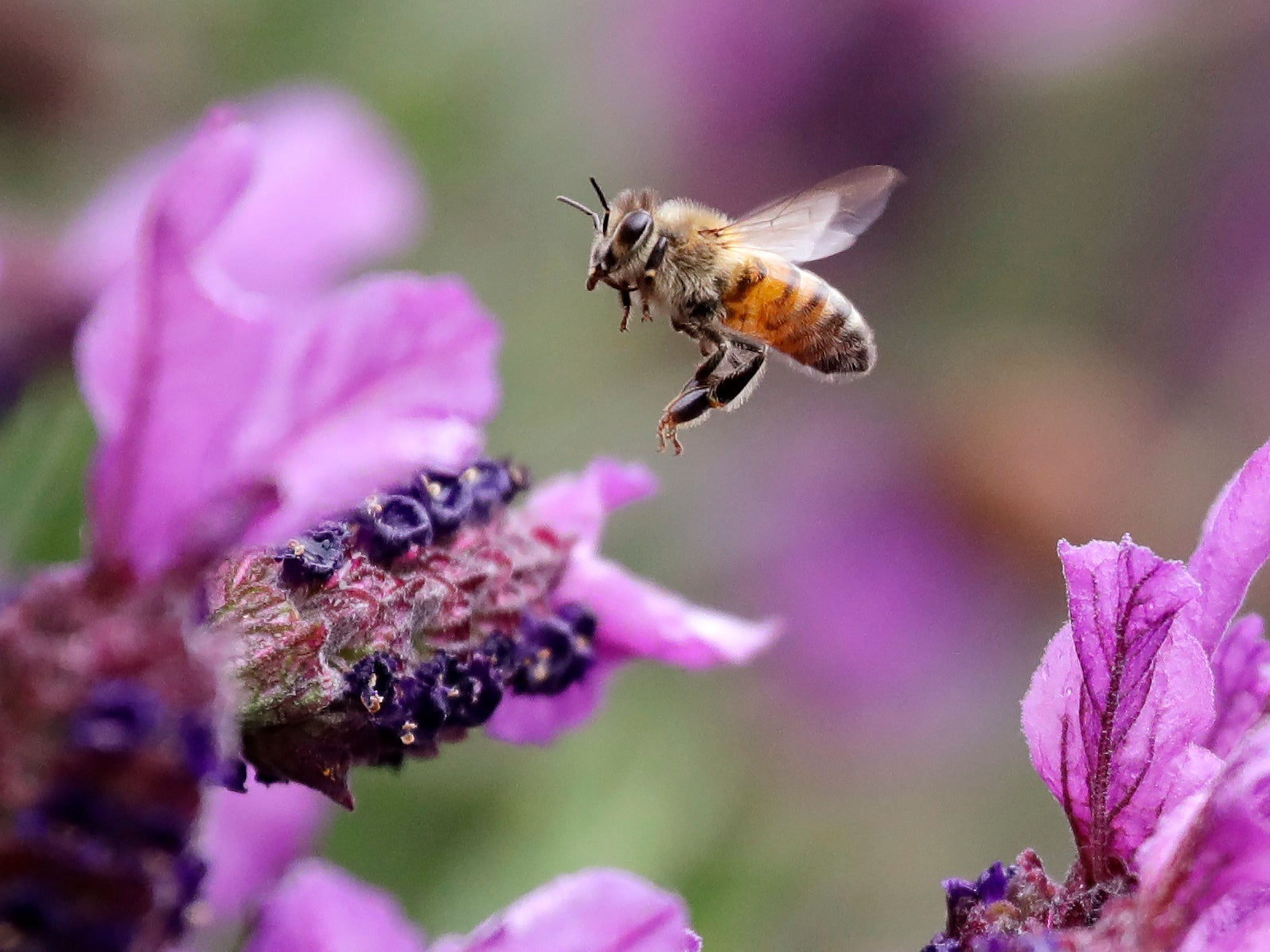Honeybees’ ‘quacking’ and ‘tooting’ decoded by scientists
Researchers now believe vibrations are whole-hive communications designed to control swarming, Jon Sharman reports


Scientists have discovered the meaning behind “quacking and tooting” noises made by honeybee queens as they emerge from their nurseries.
Using highly sensitive accelerometers to measure vibrations in the hearts of beehives, researchers found that the insects used alternate quacking and tooting sounds known as “piping” to coordinate the release of new queens from their gestation cells during the swarming season.
Swarming is when a mature queen leaves the hive along with about half her workers to found a new colony. Nottingham Trent University scientists hope their new work can help beekeepers predict and manage their bees’ swarming behaviour.
Their recordings found that a mature, free-moving queen produces a “tooting” sound while so-called virgin queens, encased in their wax gestation cells, reply with “quacks”. When the tooting stops – signalling the mature queen has departed – the thousands-strong workforce knows it is time to release a new queen, who will then begin her own tooting signal.
In this way, the team found, the hive coordinates its swarming behaviour. Once no more quacking is heard, the colony knows not to attempt to swarm again because no virgin queens remain to lead the workers that would be left behind.
“The previous common interpretation of this duet is that it is a sizing-up exercise between the mobile and captive queens,” said Dr Martin Bencsik, who led the study.
“Our work provides strong evidence that the queen tooting and quacking is actually a colony-level communication to aid the worker population in the orderly coordination of the release of queens.”
The study also involved France’s National Research Institute for Agriculture, Food and Environment and the Beekeeping Centre of Research and Information in Belgium. It is published in Scientific Reports.
How do bees produce their ‘quacks’ and ‘toots’?
Good vibrations
After the mature queen leaves with her swarm and ceases to toot, a new virgin queen, or gyne, hatches and begins her own tooting.
The NTU study says: “During each tooting sequence, the queen presses her thorax onto the [honeycomb structure of the hive] and vibrates her wing muscles in the folded position.
“Typically, the emerged queen produces several one-second-long pipes that are each immediately followed by several bursts of less than half a second with a fundamental frequency that increases with the age of queens, ranging from 200Hz to 550Hz, and is usually observed around 400Hz.”
In response, gynes still waiting in their wax cells produce quacks.
“Quacking is a sequence of numerous short pulses that each typically last less than 0.2 seconds at a lower fundamental frequency compared to tooting, of around 350Hz,” the researchers write.
“Both types of queen piping are broadcast within the hive as vibrations through the honeycomb.”
Dr Michael Ramsey, also of NTU, said measuring vibrations could help beekeepers monitor their hives for signs they are about to swarm.
He said: “By providing them with continuous information about swarming preparations, beekeepers will be able to prioritise their efforts, saving them both time and money, and adjust swarm-prevention measures to minimise disruption to their colonies, allowing them to develop more naturally.”
Beekeepers may try to keep honeybee colonies from swarming in order to maintain honey production. In other cases they are concerned for neighbours who may be put off by swarming bees latching on to inconvenient spots like their car or home.
Swarms are most likely to emerge in late spring and early summer.
Join our commenting forum
Join thought-provoking conversations, follow other Independent readers and see their replies
Comments